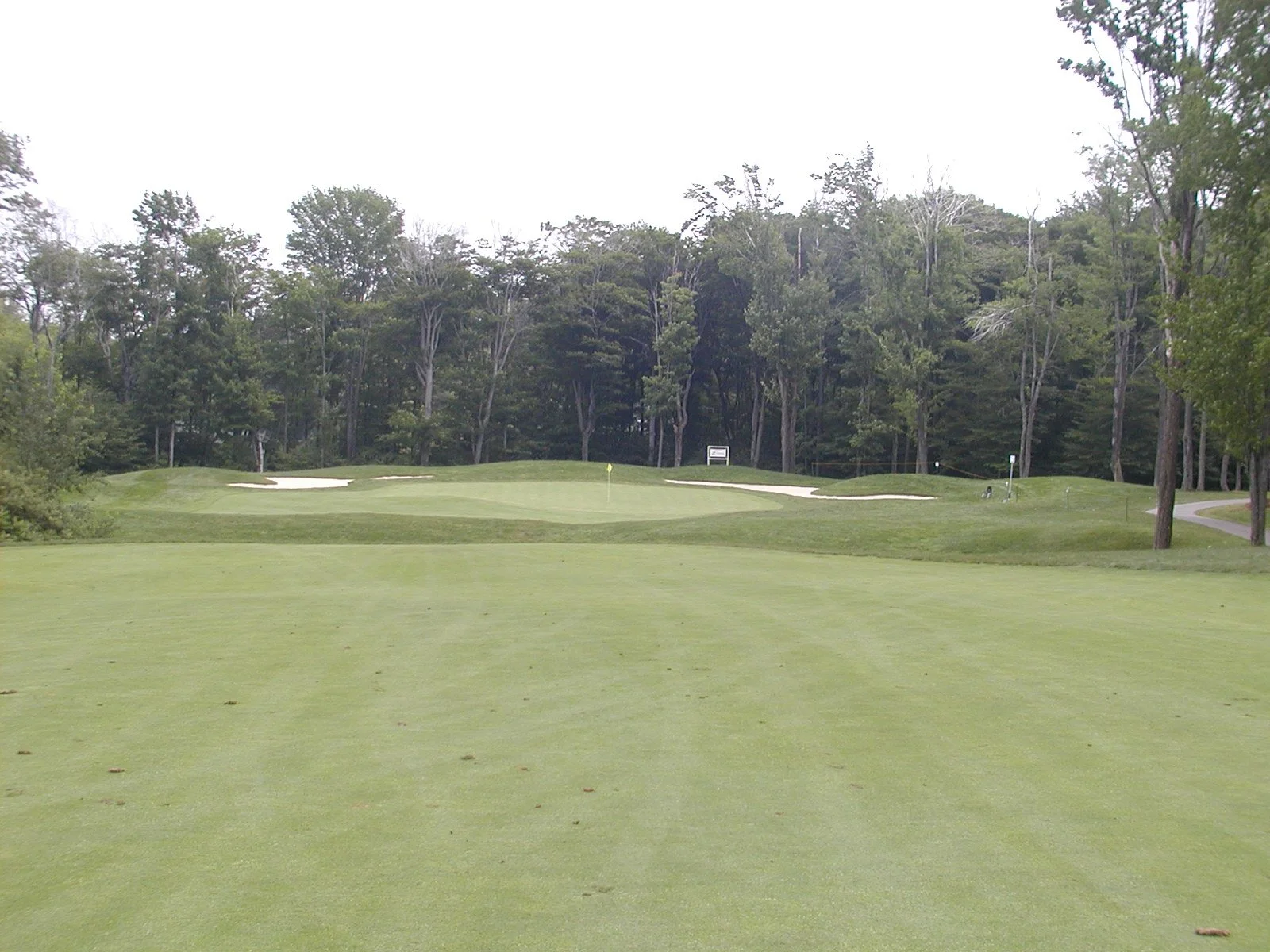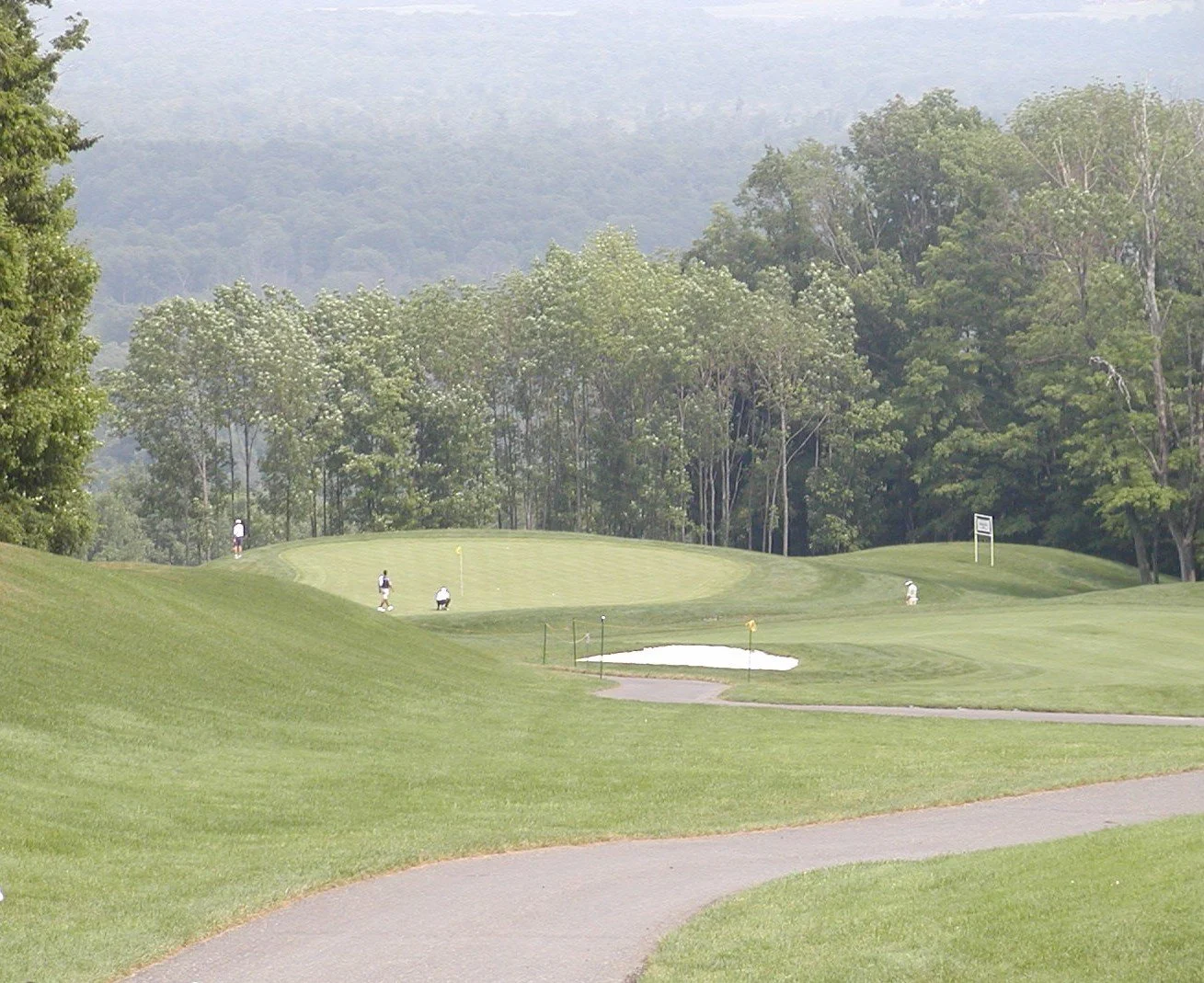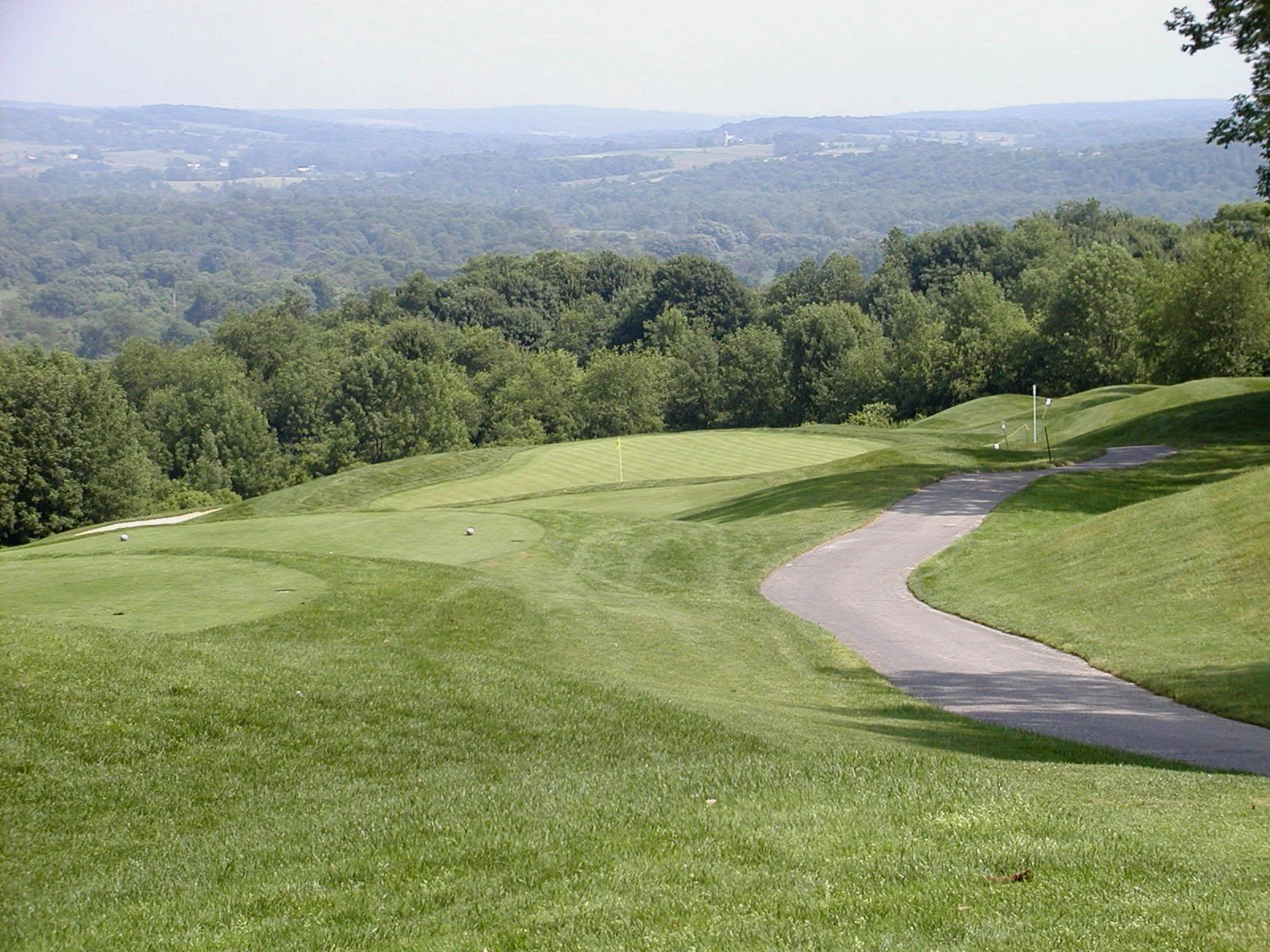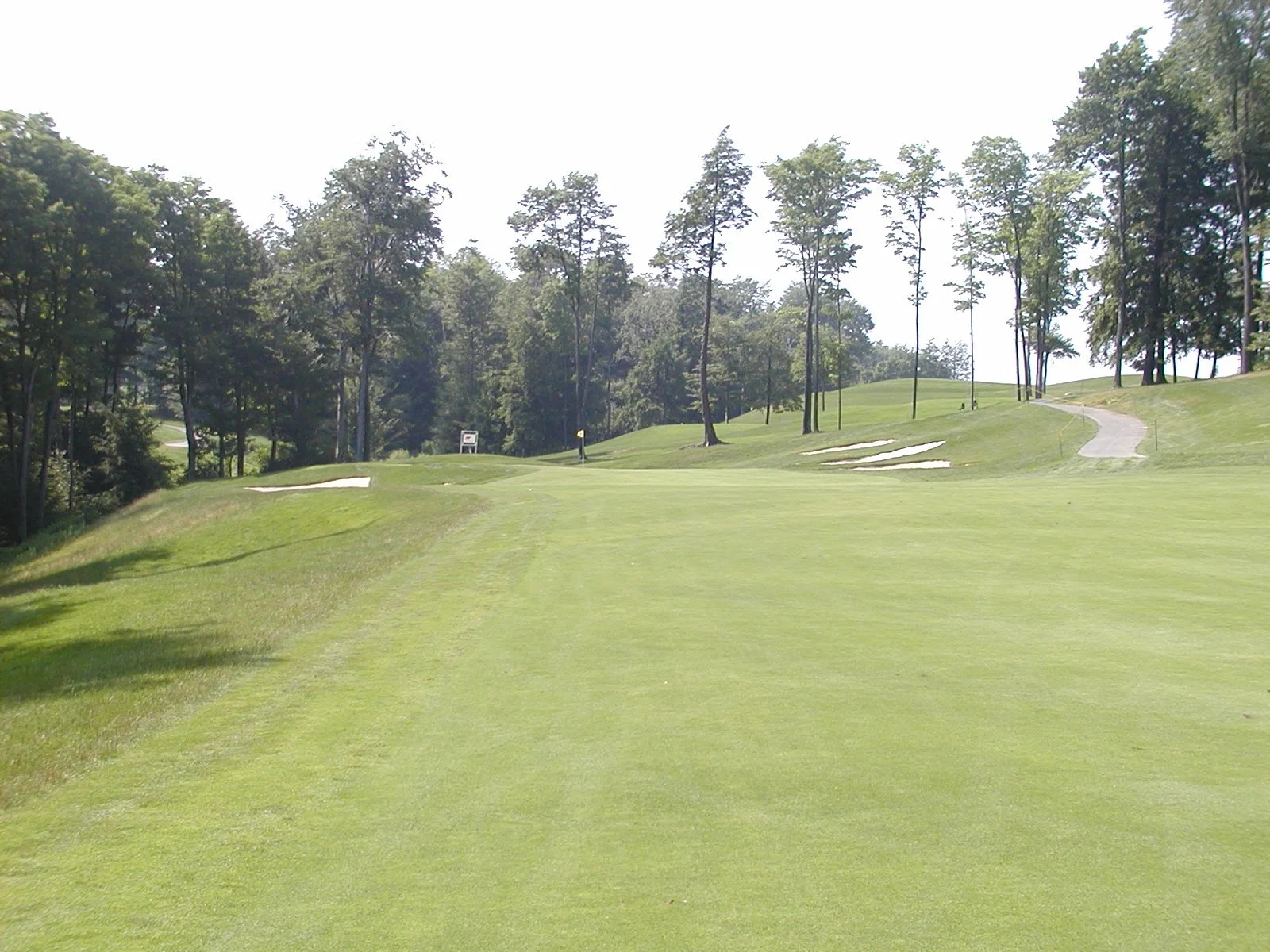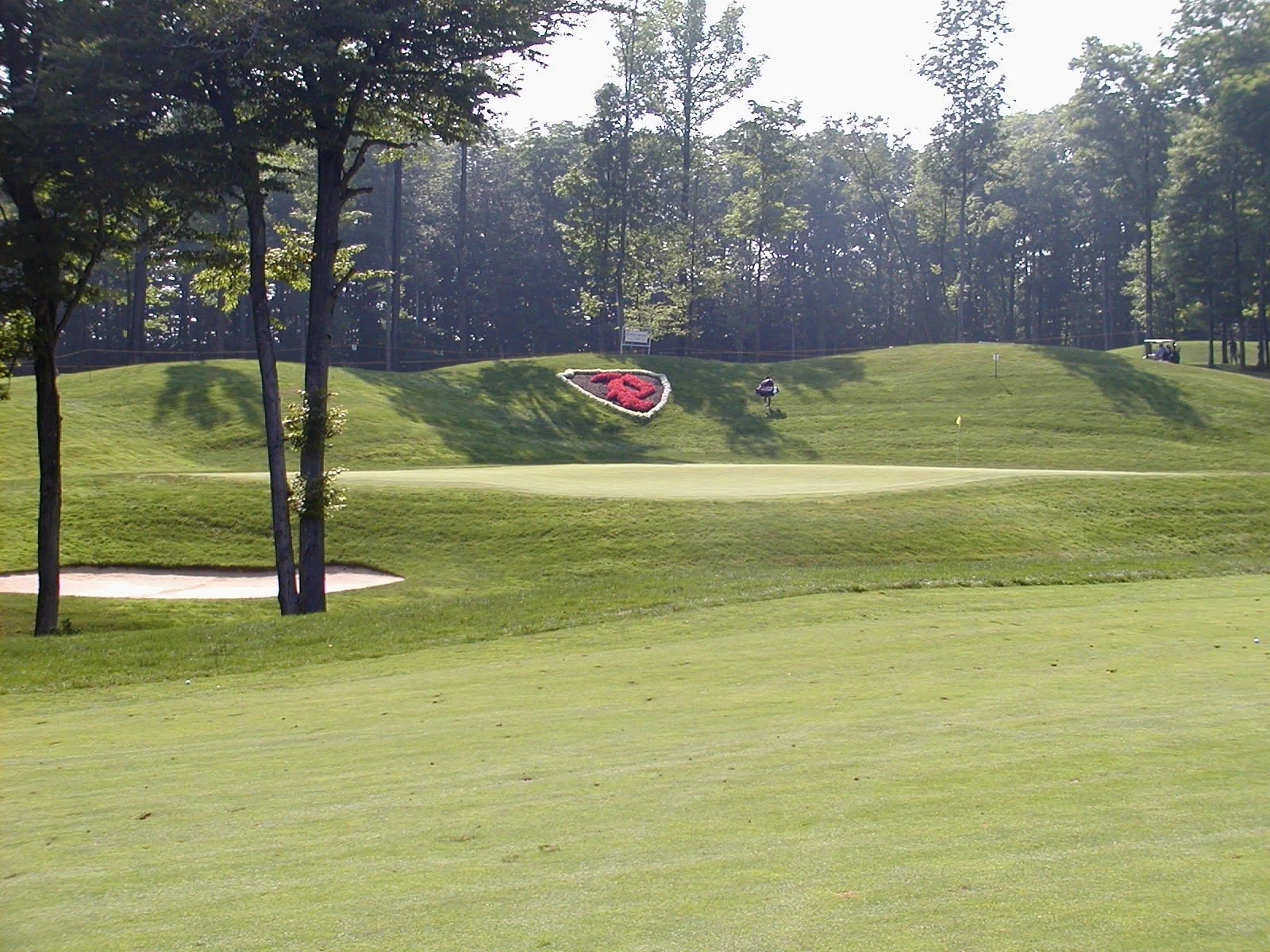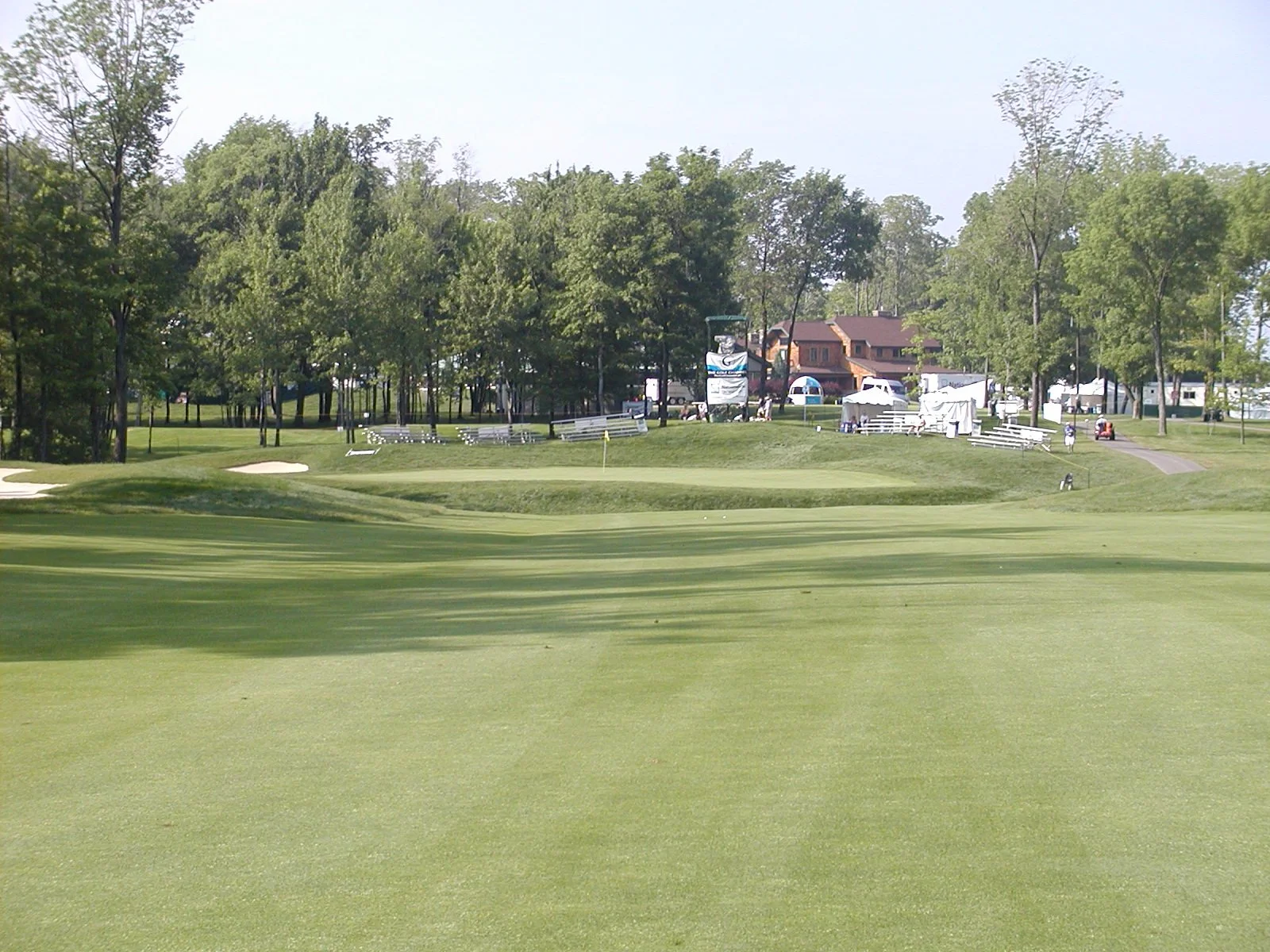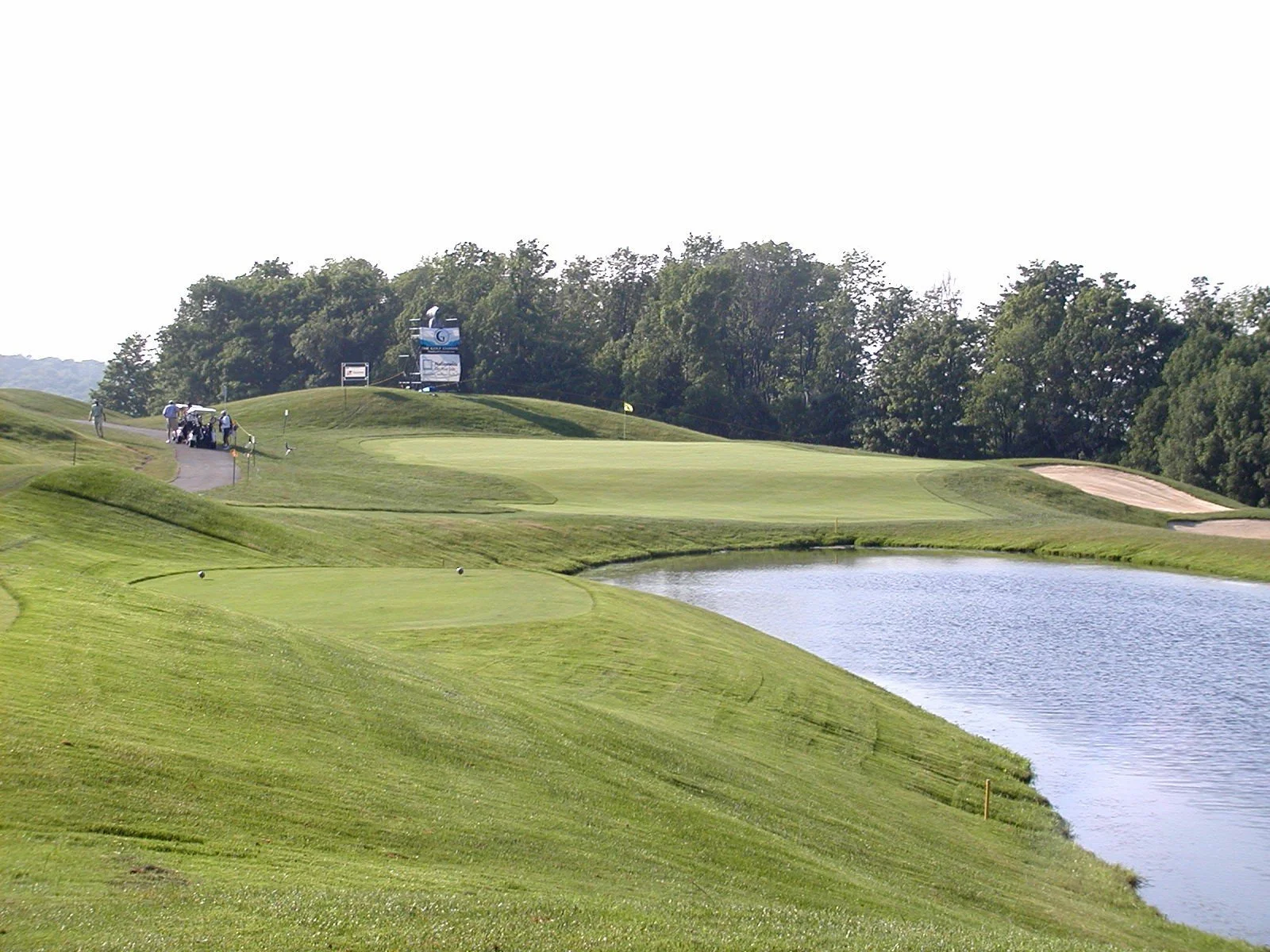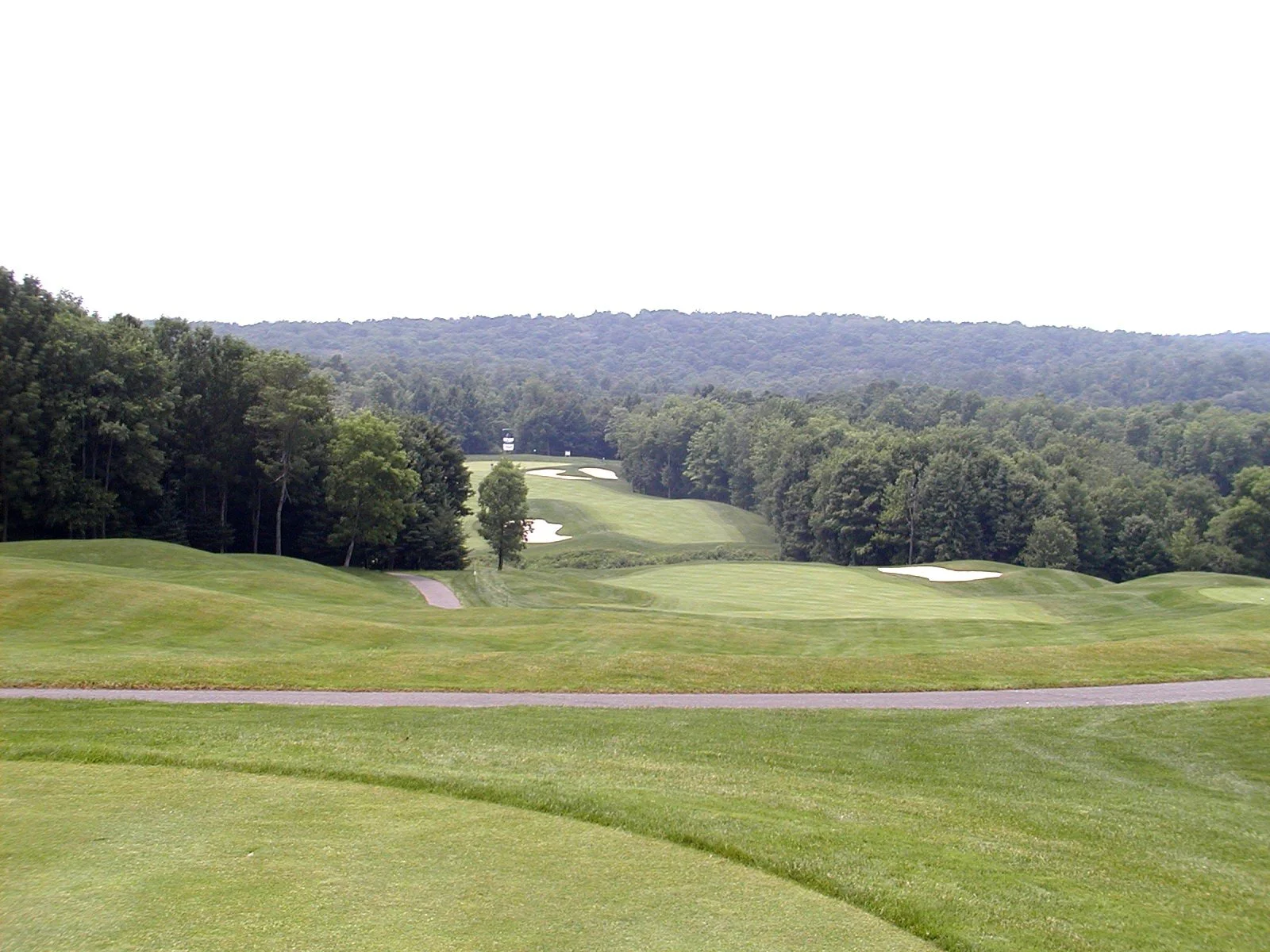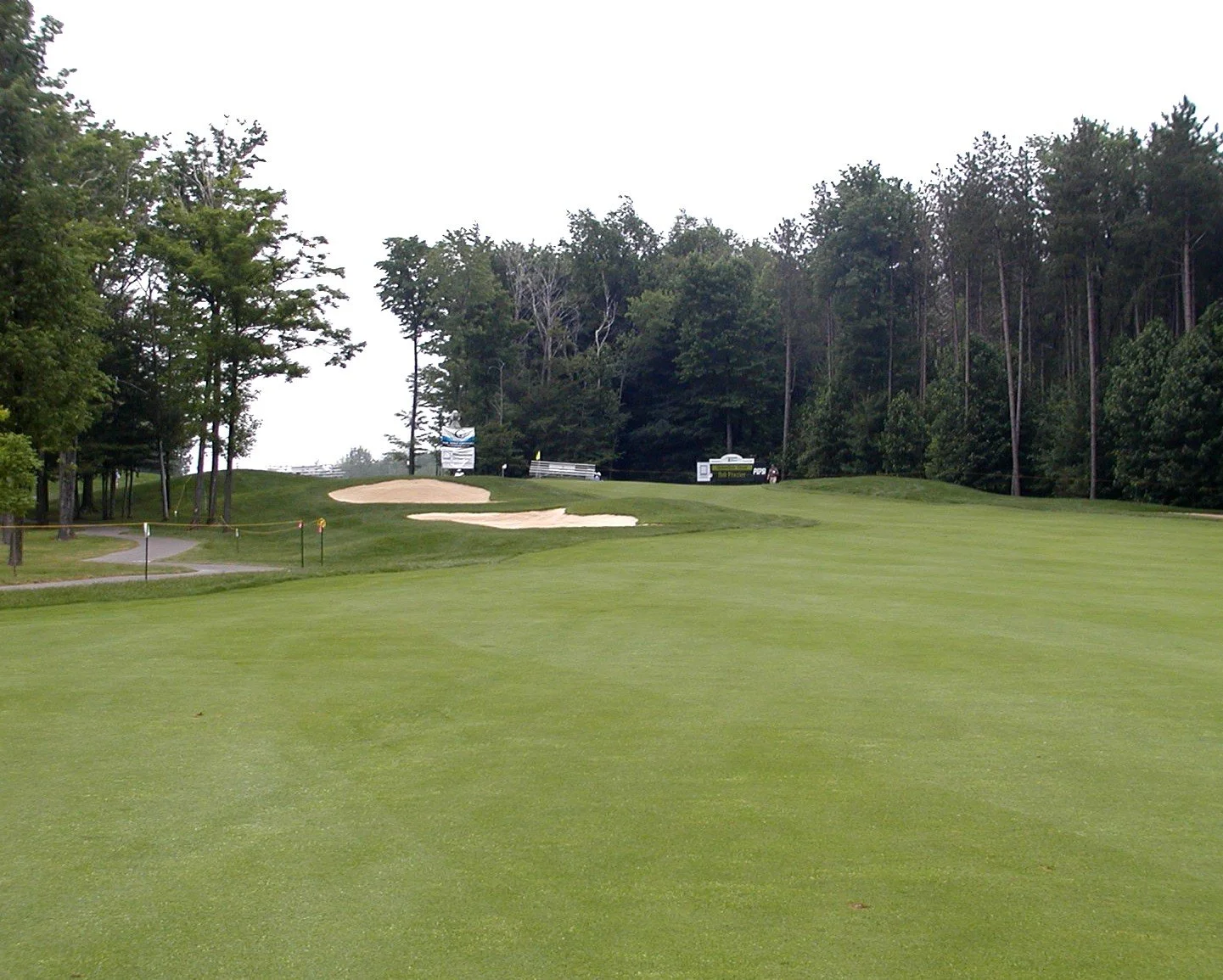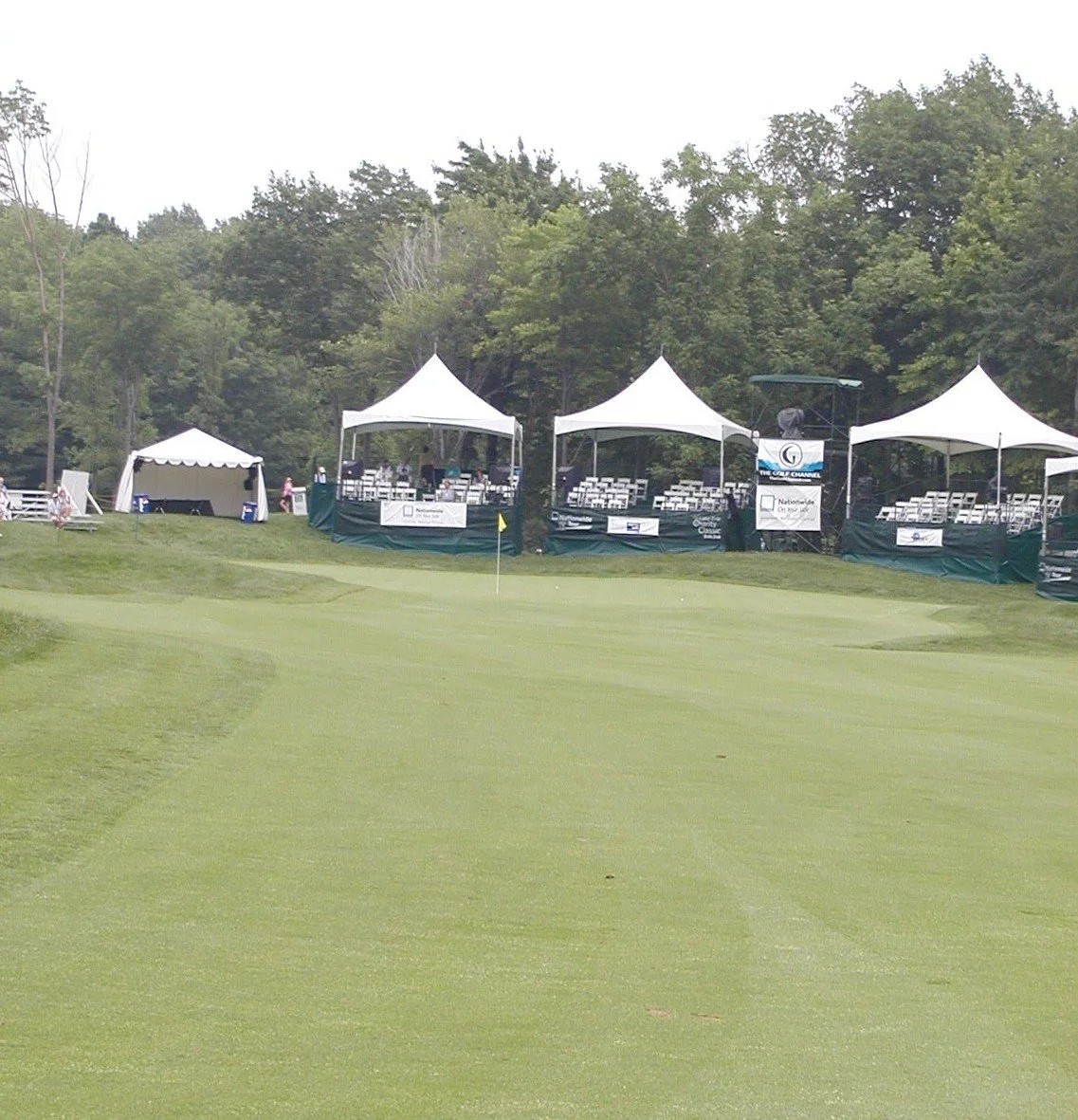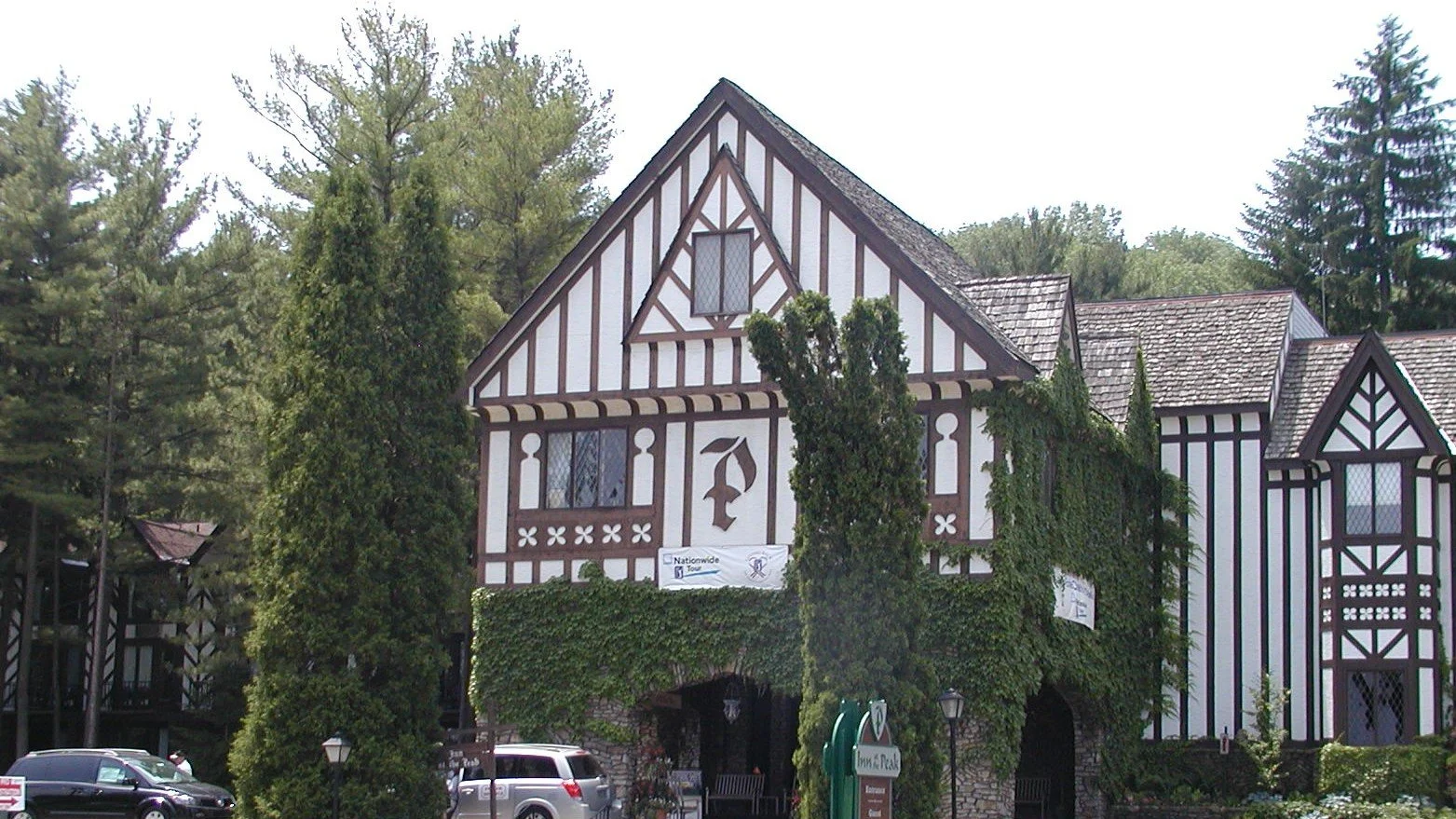PEEK'N PEAK RESORT (UPPER COURSE)
Course Architect: John Exley, redesign (2006-07)
Year Opened: 1993 (first nine), 1996 (second nine)
Location: Findley Lake, New York
Slope: 137. Rating: 73.7
Par: 72
Yardage: 7,105
Hole-by-Hole: 1 - Par 4 414 Yds 10 - Par 4 409 Yds
2 - Par 5 523 Yds 11 - Par 4 483 Yds
3 - Par 4 345 Yds 12 - Par 3 201 Yds
4 - Par 3 190 Yds 13 - Par 5 563 Yds
5 - Par 4 439 Yds 14 - Par 3 200 Yds
6 - Par 3 200 Yds 15 - Par 4 477 Yds
7 - Par 4 330 Yds 16 - Par 4 400 Yds
8 - Par 4 403 Yds 17 - Par 5 555 Yds
9 - Par 5 575 Yds 18 - Par 4 398 Yds
Par 36 3,419 Yds Par 36 3,686 Yds
Key Events Held: Nationwide Tour - Lake Erie Charity Classic (2002-05), Peek'n Peak Classic (2006-07), LECOM Health Challenge (2016-19).
Awards Won: 4 1/2 stars by Golf Digest's Best Places to Play (2005).
Website: pknpk.com
HISTORY: In a relatively short period of time, Peek'n Peak Resort's Upper Course has developed into one of the finest tracks in western New York. Designed by John Exley in 1996, the Upper Course has played host to the Nationwide Tour's Peek'n Peak Classic since 2002. The first nine holes of the Upper Course was completed in August of 1993, while the final nine was
added in 1996.
During the first year of the event, Patrick Moore erased a seven-shot deficit after round one to post one of his three 2002 wins on the Nationwide Tour. Greg Gregory opened with a course-record 64 to take a two-shot lead after the opening round. Omar Uresti, who carded back-to-back 67s, held the halfway lead, one clear of Gregory, while Moore shot 68 to trail by five. Following the third round, Hunter Haas, Doug Barron and Kelly Gibson shared the lead at eight-under par, two ahead of six players, including Moore who shot another 68. Moore continued his hot play, shooting his third straight 68 to clip Haas by one for the title. For the week, the course held up quite well, playing to a scoring average of 72.013. The ninth hole, which played as a par-four in 2002, was the most difficult hole on Tour that year, with a stroke average of 4.581, yielding just 20 birdies.
Veteran player Guy Boros carded four sub-par rounds in 2003 to capture the second annual event. The 2003 tournament started in the same vein as the previous year, as Michael Allen matched the course mark of 64 on opening day. Boros trailed by five following his opening 69. Stan Utley claimed the halfway lead, tying the 36-hole mark of 134 set by Uresti in 2002. Utley continued his torrid play, shooting a second-straight 66 for a three-shot lead over Shane Bertsch and a five-shot advantage over Boros. Utley struggled on the final nine holes and finished with 77, while Boros birdied the final two holes for the win, defeating Chris Couch and Bob Heintz by one for his second career Nationwide Tour title. Boros' four-day total of 275 matched the tournament record set the previous year by Moore. Playing as a par-72, the course stroked out at 71.778, ranking 14th out of 31 courses on Tour. For the week, the fifth hole was the most difficult with a scoring average of 4.271.
Kevin Stadler won for the first time in his career in 2004, as he defeated Michael Long and Bubba Watson in a playoff. Stadler, who's father Craig also won the same week on the Champions Tour, led by one heading into the final day, but a Sunday 74 had him finish in a tie at nine-under par. After Long was eliminated on the first extra hole with bogey, Stadler and Watson continued on
with pars on the next two holes. On the fourth playoff hole, No. 18, Watson's approach came up 40 feet short of the flag. Stadler had half that distance for his birdie, but watched as Watson's putt missed four feet right. Stadler's birdie putt just missed the hole, but he was in tap-in range. Watson missed his four-footer to hand Stadler the title. Once again, the Upper Course proved to be very difficult, playing to an average of 72.685, ranking it 11th on Tour. The final round alone played to 73.438, making it the hardest final round course on tour. Gavin Coles and Jeff Quinney, who both tied for fourth, matched the course record during round two.
History was made in 2005, as Esteban Toledo recorded his first career title, defeating Jeff Gove by two shots. Toledo, who's victory draught spanned 458 events on the Nationwide and PGA Tour's, carded a final round of 71 for a tournament record score of 274. Starting the round with a three-shot lead, Toledo fell into a tie with Gove after making bogey on 12, while Gove made
birdie. One of the many signature holes on the Upper Course, the 14th proved to be the difference, as Toledo holed a sand wedge from 86 yards out for an eagle on the par-five, while Gove, playing in the group ahead, made bogey. Despite a bogey on the 15th, Toledo held himself together, parring the final three holes for the win. During the week, Toledo made 17 birdies and one eagle and ranked first in greens in regulation at 80.6.
John Merrick birdied four of the final five holes of regulation to force a playoff with Gavin Coles, and then parred the third extra hole for his first career Nationwide Tour title in 2006. On the first playoff hole, the 18th, Coles was just three feet for birdie, however Merrick drained his 25-footer
for birdie and Coles sank his. Both players parred the second extra hole, the 9th. Next up was the par-3 10th. With daylight fading, Coles missed the green to the left, while Merrick reached the putting surface, 22 feet away. Coles' chip shot came up short on the fringe, 18-feet from the cup. Merrick two-putted for par and Coles failed to sink his third.
REVIEW: The opening hole is a solid, dogleg left par-four, stretching 414 yards from the tips. Fairway-metal or long-iron off the tee is needed to set up a short- to mid-iron approach. Favor the right side off the tee, as a large fairway bunker guards the left, as well as tall stands of trees. Your second shot must carry a creek that fronts the green, then split a pair of traps on either side of the putting surface. The green itself, slopes hard from back to front, so play below the hole to set up the best chance of birdie.
The second is the easiest and shortest of the four par-five's at Peek'n Peak. Just 538 yards, the key to the second is accuracy. Your tee shot must avoid the pair of traps down the left side of the landing area and the trees down the right to have any shot at getting home in two. Your next play should track down the left towards the green, as the fairway slopes to the right, with a series of traps dotting that side. The putting surface is quite long and slants from left to right and is very slick. Eagle is an option, but making birdie is a must.
The third is one of those great, short holes that all courses should have. Playing 345 yards from the back buttons, it plays straight downhill from tee to green, giving you the option of trying to reach the green with your first shot. There are always downsides in going for the green. First, sand guards the entrance to the putting surface, second, trees guard both sides of the hole through the green, so if you're going for it, you'd better be straight. The putting surface is two-tiered and slopes from back to front. By the way, long is no bargain either, with sand and a downhill slope over the green.
The first par-three on the course, the fourth is another downhill gem that offers, not only a great challenge, but a beautiful view of the surrounding area. Although 190 yards, it plays much shorter than the distance, requiring just a short-iron to the sloping green. The putting surface bends sharply from left to right and back to front, so to err, miss right. Long and left will result in bogey or worse, a possible lost ball.
The longest par-four on the front side, the fifth is quite a test, playing uphill to the green. The dogleg right features a trio of traps on the right side of the landing area, forcing you to play left, where trees cover the entire side of the fairway, not to mention a severe drop off. The elevated
green is protected smartly by three traps right and bunkers left. The putting surface is fairly benign, so making par shouldn't be too much trouble.
Another downhill par-three, the sixth is straightforward. Just clear the ravine fronting the green and you'll make par. No sand, just a large green that slopes from back to front, the center of an amphitheater type setup. Although long at 200 yards, just a mid-iron, say seven or eight will do just
fine.
Although not considered the signature hole at Peek'n Peak, the seventh certainly has all the trimmings. The first shot on the 330-yard, dogleg left plays uphill to the landing area, as just a long-iron or fairway-metal is needed. The key here is to play right of the creek that runs the entire left side and be long enough to pass the tall trees, also on the left. This will leave just a wedge to a slightly, elevated green. The putting surface slopes from right to left, with a tier in the center and is quite fast. Birdies can be made, but par is a good score.
The eighth is a straight, uphill par-four just 403 yards in length. But don't be fooled, accuracy is of utmost importance, as trees and out-of-bounds guard the left and more trees flank the right. The fairway is devoid of sand, but the area right of the green picks up the slack. Missing the putting surface left will result in a difficult pitch that runs from back to front. Club selection is also important, as the green is quite long. If the wind is up, it could be a three-club hole.
It's the longest hole on the course, but it can be reached in two. From the gold tees, the ninth measures 575 yards and is a downhill, right-to-left beauty. A big, high draw will be needed to play this hole correctly. A pair of traps guard the right landing area, while a tall, deep forest protects the
left. After a successful tee ball, a decision needs to be made, should I stay or should I go. A 250-yard blast will be required just to cross the ravine fronting the green, so choose wisely. The most logical play would be to layup just short of the landing area bunkers on either side of the fairway, thus leaving a 100-yard shot to a very receptive green. The putting surface is quite wide with just one bunker behind the green. Sloping from back to front, play below the hole for your best shot at birdie.
The opening hole on the back nine, is also the shortest on the course at just 167 yards. The object here is to avoid the sand, short and left of the green and avoid the creek fronting the putting surface. The green slopes hard from back to front and is quite long. Stay below the hole for your best chance at birdie.
Rated the easiest par-four on the course, the 11th is a straightaway 409-yarder that plays slightly uphill for your second shot. No sand in the fairway, so lock and load to leave a short-iron to a green that is protected on the right side by sand. The green slopes from left to right, but par should be your worst score here.
In contrast, the 12th hole is a bear, playing right to left and stretching 483 yards from the back tees. Your tee shot must stay clear of the bunkers guarding both sides of the fairway to have any chance at reaching the green. Even with a successful tee ball, you'll still have a medium-iron to a putting surface protected by sand. This is one of those holes, that if you make bogey, it's OK.
The final par-three, is certainly an outstanding one. This beauty plays ever so slightly uphill and your long-iron off the tee, must carry across a pond to reach the green, which is protected on the right by a pair of deep bunkers. The putting surface is quite undulating and slopes severely from back to front. At all costs, play from below the hole, otherwise, a three-putt could be in store.
There is good reason that the 14th is the signature hole at Peek'n Peak Resort. Stretching a modest 563 yards, this par-five must be played with caution right from the start. A 280-yard blast from the elevated back tees will get you to the end of the fairway, just before an 88-yard ravine. The left side of the fairway is the best play, avoiding the bunker on the right. Your layup shot must now carry 165 yards, covering the ravine and a 40-yard long bunker in the center of the fairway. The approach shot to the green is now just a little wedge to a putting surface that boasts traps left and right. The green slopes from back to front, but is quite accessible. Word of caution,
missing long will result in a difficult pitch from deep rough.
The par-four, dogleg right 15th is quite a test, playing directly uphill with a forced carry over the ravine that played havoc on the last hole. Favor the left side off the tee, as a deep, long bunker guards the right. An extra club must be used to reach the green, as the climb is quite steep. The putting surface is protected on the left by sand and an additional trap is behind the green. Not much slope in the green, but it does cant from right to left and front.
Another bender to the right, the 16th is quite simple, as long as you select the right club off the tee and avoid the traps guarding the landing area. With that said, just a short-iron will remain to a green protected by sand left and short. The putting surface is quite benign, so making par should be no problem, heck, even a birdie could be in the offing.
Although just 555 yards from the back buttons, the 17th plays quite longer, as it traverses uphill from tee to green. Favor the left side of the fairway off the tee, as tall trees and a bunker guard the right, however be wary of the left, as sand, trees and out of bounds are nearby. A 200-yard layup will be needed to leave just a 100-yard wedge to the green. By doing this, you've avoided the fairway bunkers in the landing area. The putting surface is quite large, sloping from back to front. Make sure to take enough club in getting home. Avoid the entire right side, as thick rough and dense trees protect the green. Generally, making par on a par-five is an average score, but not in
this case.
A solid finishing hole, the 18th is a dogleg-left par-four, just 398 yards in length. A fairway-metal is the club of choice off the tee, as water down the right side is reachable. Right-center is the play, as a 45-yard trap protects the left side of the landing area. Just a short-iron remains to a fairly
simple green, with just one trap, short and right.
FINAL WORD: Originally just a winter retreat, Peek'n Peak Resort is now a golfing destination. The Upper Course, with its conditioning, layout and difficulty is one fine track that you'll never get tired of playing. There is no doubt that the Upper is the area's best venue and with all of the amenities within your grasp, it's not just for skiing anymore.
Peek'n Peak is a family and golfing mecca and a stop that should not be missed. There is 36 holes of golf, the Lower Course being the other layout, a solid practice facility, miniature golf, Olympic-size indoor pool, outdoor pool with water slide, fitness room, sauna, indoor and outdoor tennis, bicycles, arcade and much, much more.
Let's not forget snow sports. The resort features 26 ski runs, from 200 feet to as high as 4,100 feet. Snowboarding, tubing and cross country skiing are available, along with half-pipe and a Learning Center for all ages. Peek'n Peak is open all year round and is located in close proximity to Pittsburgh, Cleveland, Erie, Buffalo and Niagara Falls. Need I say more, just book your trip, you won't be disappointed.

